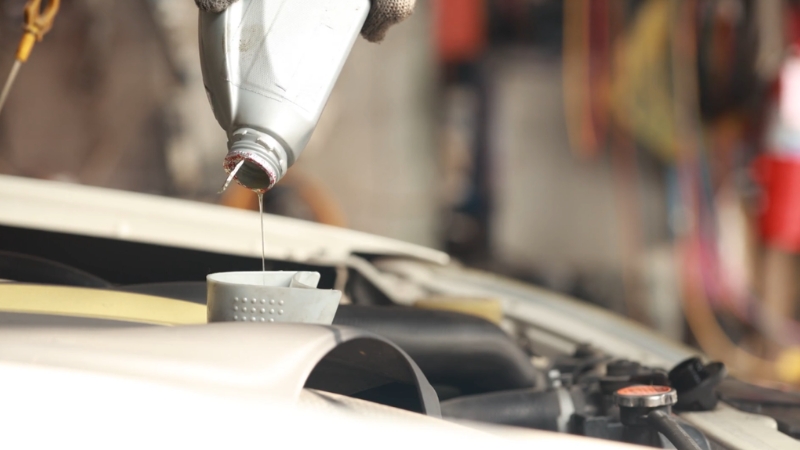
Share Post:
When I first started looking into motorsport, I wasn’t sure where to begin. The excitement of racing was there, but the idea of getting a car, figuring out the rules, and even knowing what kind of racing I wanted to do felt overwhelming. If you’re in the same boat, you’re not alone.
Finding your first race car isn’t just about picking something fast—it’s about making smart decisions that match your goals, budget, and skill level.
In this guide, I’ll walk you through the key steps I wish someone had explained to me when I was starting out. From choosing the right class to finding the right car, we’ll cover everything you need to know to take that first confident step into racing. Let’s get started.
Table of Contents
ToggleSet Your Goals (and Keep Them Real)
Before you even glance at race car listings, think about your goals. Are you looking to have fun on the weekends, compete in local events, or build a path to professional racing?
Your aspirations will influence everything—your choice of car, the class you race in, and the budget you’ll need.
Budget Basics
Racing costs add up fast, and it’s more than just the price tag on the car. You’ll need to factor in:
- Maintenance
- Safety gear
- Entry fees
- Transportation
- Repairs (and there will be repairs)
Start with an honest budget. It’s tempting to stretch beyond your means for a faster car, but reliability and sustainability win in the long run.
Consider exploring platforms like AutoBidMaster, which can help you gauge the market and set a realistic budget for your first race car.
Choose the Right Racing Class

Not all cars are created equal, and not all racing classes suit beginners. Each class has specific regulations, so it’s worth taking a closer look at some of the most beginner-friendly options. Here are the classes:
1. Spec Miata
Spec Miata is a popular and accessible class in U.S. amateur road racing, featuring Mazda MX-5 Miatas (also known as Mazda Roadsters) from model years 1990 through 2005.
The class is sanctioned by organizations such as the Sports Car Club of America (SCCA), National Auto Sport Association (NASA), and Midwestern Council of Sports Car Clubs (MCSCC).
- Why it’s great: Affordable, balanced, and highly competitive.
- What to expect: Mazda Miatas dominate this class. The cars are reliable, parts are plentiful, and racing is close.
2. Spec Racer Ford (SRF)
Introduced in 1984 as “Sports Renault,” the SRF was initially powered by a Renault engine. In 1994, due to the diminishing availability of Renault engines, the SCCA transitioned to a 1.9-liter Ford engine, rebranding the vehicle as the Spec Racer Ford.
This change enhanced performance and ensured a consistent supply of parts. In 2015, the SRF underwent another evolution with the introduction of the Gen3 model, featuring a 1.6-liter Ford engine, offering improved power and reliability.
- Why it’s great: Everyone has the same car, so races emphasize driver skills.
- What to expect: Open-cockpit, purpose-built race cars with manageable operating costs.
3. Improved Touring (IT)

Improved Touring (IT) is a category within amateur road racing, primarily governed by the Sports Car Club of America (SCCA).
This class is designed to offer an accessible entry point for enthusiasts by allowing limited modifications to production-based cars, ensuring both safety and competitive balance.
- Why it’s great: Variety of makes and models allowed with light modifications.
- What to expect: Flexibility in choosing a car, but you’ll need to keep modifications within class limits.
4. Formula Vee
Formula Vee is a popular entry-level, open-wheel racing class in the United States, offering an accessible and cost-effective pathway into motorsports.
Established in 1964, years before cars even had seatbelts, by the Sports Car Club of America (SCCA), it utilizes components from pre-1963 Volkswagen Beetles, including the engine, transmission, front suspension, brakes, and wheels, all integrated into a purpose-built tubular frame with fiberglass or carbon fiber bodywork.
- Why it’s great: Low-cost open-wheel racing.
- What to expect: A step into formula racing with Volkswagen-based cars.
Where to Find Your First Race Car

Once you’ve narrowed down your class, it’s time to start hunting. Here’s where to look:
1. Used Race Cars
- Check platforms like RacingJunk.com or classifieds on SCCA and NASA websites.
- Pros: Cost-effective, often comes with upgrades or spare parts.
- Cons: Always inspect the car carefully to avoid hidden issues.
2. Build Your Own
- Start with a base model and modify it to meet class regulations.
- Pros: You’ll know your car inside out.
- Cons: Requires significant time, effort, and mechanical know-how.
3. Rental Programs
- Many racing schools and teams offer rentals.
- Pros: Test the waters without committing to ownership.
- Cons: Limited customization and higher costs over time if renting repeatedly.
Key Considerations When Evaluating a Race Car
Not all race cars are created equal. Before making a purchase, assess the following:
- History: Ask about the car’s race history, any incidents, and maintenance records.
- Mechanical Condition: Have a trusted mechanic check the engine, transmission, brakes, and suspension.
- Regulation Compliance: Make sure the car meets the technical specs for your chosen class.
- Parts Availability: Choose a car with readily available spares and an active support community.
Safety First
Racing is exciting, but it’s also inherently risky. The good news? Safety gear is here to protect you. Your car should come equipped with:
- A properly installed roll cage.
- Certified racing seat and harness.
- A functional fire suppression system.
- A safe fuel cell to minimize fire risk in accidents.
Keep Costs Manageable

Racing has a reputation for being expensive, but smart strategies can help you stretch your dollars:
- Start in a lower-cost class like Spec Miata or grassroots karting.
- Share costs for transportation, tools, and garage space with fellow racers.
- Buy used safety gear and parts from trusted sources.
- Handle simple maintenance and repairs yourself if you have the skills.
My Top 3 Suggestions for Your First Race Car
1. Mazda Miata (Spec Miata)
| Specification | Details |
|---|---|
| Engine | 1.6L or 1.8L inline-4 |
| Horsepower | Approximately 116–140 hp, depending on model year |
| Transmission | 5-speed manual |
| Curb Weight | Around 2,100–2,300 lbs |
| Drive Type | Rear-wheel drive |
| Notable Features | Lightweight design, balanced handling, extensive aftermarket support |
2. Ford Mustang GT
| Specification | Details |
|---|---|
| Engine | 5.0L V8 |
| Horsepower | Up to 486 hp with Active Valve Dual Exhaust |
| Transmission | 6-speed manual or 10-speed automatic |
| Curb Weight | Approximately 3,700–3,900 lbs |
| Drive Type | Rear-wheel drive |
| Notable Features | Robust performance, strong aftermarket community, iconic muscle car experience |
3. BMW 3-Series (E36/E46 Models)
| Specification | Details |
|---|---|
| Engine | 2.5L or 3.0L inline-6, depending on model |
| Horsepower | Approximately 184–235 hp, depending on model |
| Transmission | 5-speed or 6-speed manual |
| Curb Weight | Around 3,000–3,400 lbs |
| Drive Type | Rear-wheel drive |
| Notable Features | Balanced chassis, precise steering, strong community support for racing modifications |
Your First Step on the Grid Awaits
Racing isn’t just about the car or the competition. It’s about the people you meet, the lessons you learn, and the memories you create.
Choosing your first race car is just the beginning of an incredible adventure that will test your skills, patience, and determination.
Take your time, do your research, and don’t be afraid to ask for help.
Related Posts:
- How to Secure Your Teen’s First Car - Safety Tips…
- Difference Between 225 and 235 Tires – Easily Find…
- California Window Tint Laws in 2025 Explained - Is…
- 10 Benefits of Using Ubitricity Charging Stations…
- Why Texas Is the Best State to Launch Your Career as…
- Is It Bad to Leave the AC on in Your Car When You…








